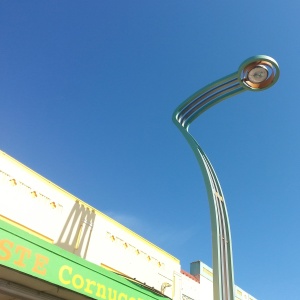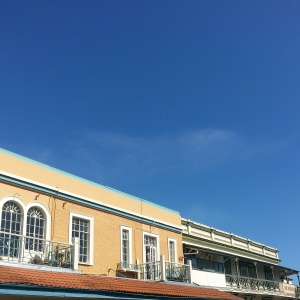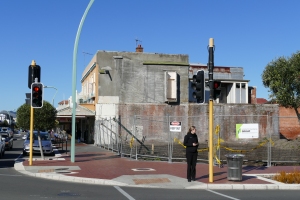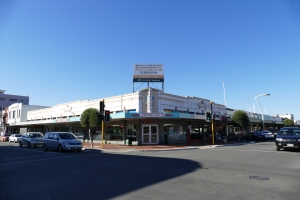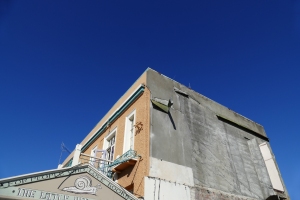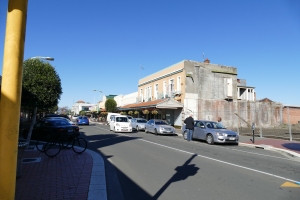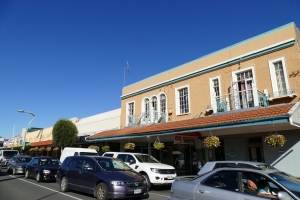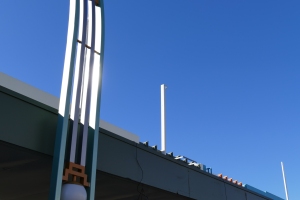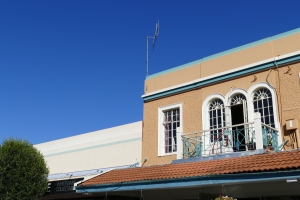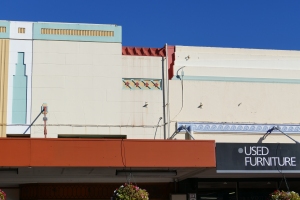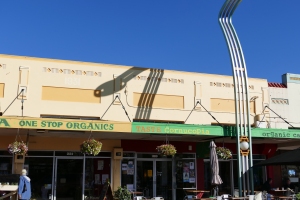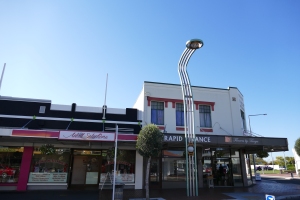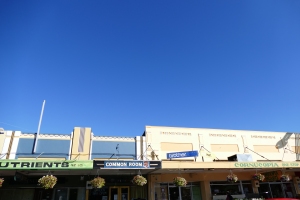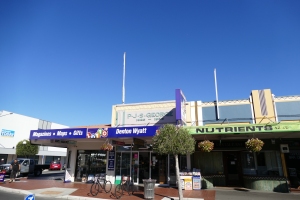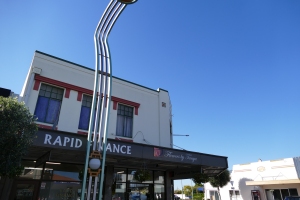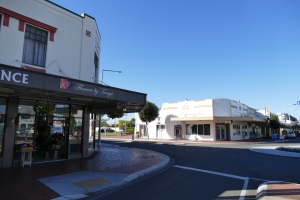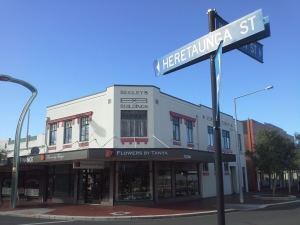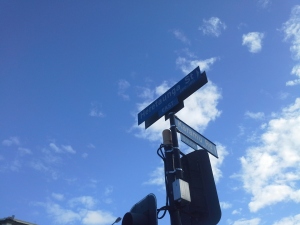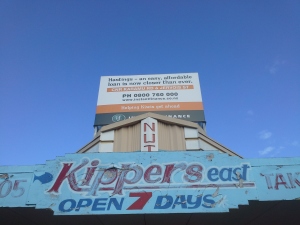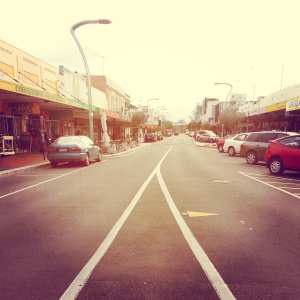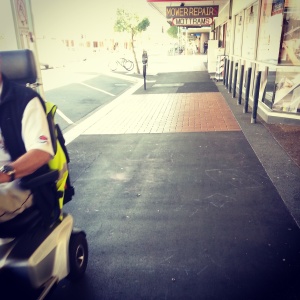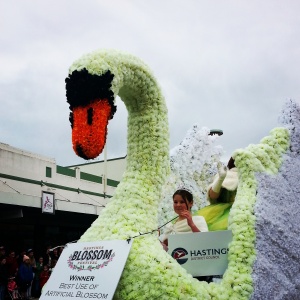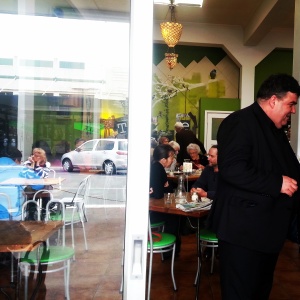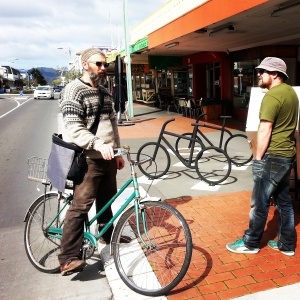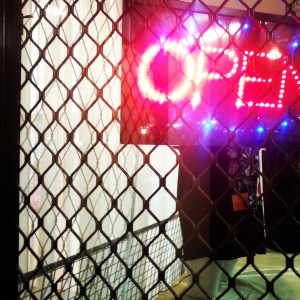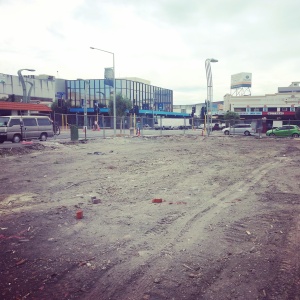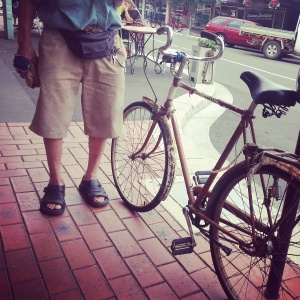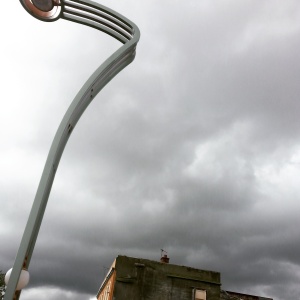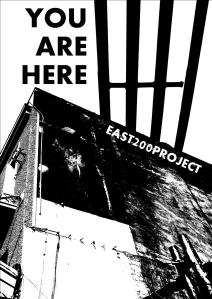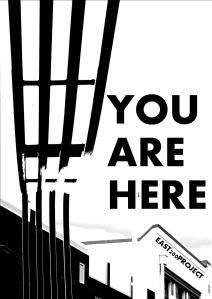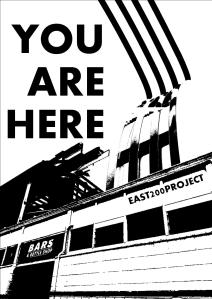East 200 is a post-industrial transmedia project made on a hyper-local level. It is focused on one small block of one small town. The project includes six short documentary interviews, a suite of six zines, hand-made screen printed posters, and instagram and facebook feeds. It uses vimeo, QR codes and Layar to enable dessimination. It fits at a meso-level in communications, where macro-level is established media and micro-level is word of mouth.
Explanation
This project comes out of my love for one small block in one small town in New Zealand. I have been part of a number of shops in the block, and I also shop there, drink my coffee there, chat to the other shop keepers, gossip in the street, keep an eye on the comings and goings. It’s the Heretaunga Street East 200 block and so the project is called the East 200 project.
I wanted to capture this block in a way that resonates with the vibe of the block itself. The block is edgy, quirky, small scale, big hearted, do-it-yourself, independent, alternative, a bit commie, and I wanted my communications response to the block to be all this, so the messages AND the mechanisms matched the place.
The block as a landscape is almost like a cardboard cutout of a street set against a bright blue sky (most of the time, grey sometimes!). The sky dominates and the block is miniaturised by it.
I began by filming some of the shop owners and turning these into five minute mini-docs. Then I had to think about how to distribute them.
About this time I went to an amazing transmedia workshop in Auckland and it really chimed with me. There I met Ingrid Kopp from Tribeca Film and she inspired me with her talk of interactive projects, participative audience and a new media landscape. I realised that my lack of sole dedication to one medium and my love of seizing whatever is interesting or at hand to tell stories could be called and thought about in terms of transmedia story.
To support my documentary pieces I settled on a small hand-made zine and QR codes to link the videos to the hard copy. Zines already have a place in this setting – audiences are used to them – they fit. Also, people mooch in the East 200 block, they don’t rush, so there’s the time and the inclination to explore a zine.
The other good thing about a zine is I can give more of the story. I can set the scene of the interview or give some background information. Also, I can add in extra bits to the story that would have required a much longer, more complex narrative if I’d only used moving images.
I played with another mechanism called Layar to bring augmented reality elements to the zine, and the map inside is augmented this way but it has a time limit so after Aug15 it will return to being just a map with no extra layers hidden within it.
From there I thought about how to get people from the street to the interview, ie how to get them to hear the voices of the shop keepers. Already on the street there are a lot of home-made posters, and it does have a bit of a socialist vibe about it, so I made some screenprinted posters which I then affixed QR codes to. (I did a weekend workshop at EIT to learn how to screenprint and made the posters there using their kit).
Now, from the street, people can watch on their mobile devices, 5 minute videos of the people in the shop. Then they can read the zines and find out more.
So what about a feedback loop?
Rather than invent a new one I thought about where people are already online. They seem to be on Facebook and on Instagram. So I created spaces in those two platforms for people to capture their stories and images of the block. And I used both platforms as mercurial branches to the more solid documentary and hard copy collateral communications forms.
So all together these mechanisms looked at the East 200 block through a transmedia lens, giving a three dimensional picture of the place, with solid and liquid elements, tactile and ephemeral; I found the communication deeply satisfying because it was so rich, and I imagined audience participating in the experience would too.
Blue skies
Playing with Korsakow
Towards the end of the East200 project I began to consider how we can archive such work. I have created a Korsakow non-linear experience of four of my documentary pieces so audience can move through participation into the role of ‘director’. This begins to answer how we can capture ephemeral experience.
Some instagramming
Where to from here?
From here my work will continue in a four-fold way:
In my business: What are the commercial opportunities of transmedia exchange?
In my thinking: Why do people participate? The birth of the actualiser.
For my practice: What is a writer’s response to TL:DR?
For my community: How do we archive transmedia projects?
Crit 3 show-me-more video clips 2
Crit 3 show-me-more posters
Crit 3 show-me-more video clips
Crit 2 show-me-more
On Design Thinking:
http://designfuckingthinking.tumblr.com/?og=1
James interview:
Adrian full interview:
Adrian 1 minute chunk p1:
Adrian 1 minute chunk p2:
Adrian 1 minute chunk p3:
Rotunda NZDC – close reading:
http://webserieschannel.co.nz/webseries/rotunda-nzdc/
The Hole – close reading:
http://narrative.ly/stories/life-in-the-hole-part-i-the-catalyst/
1000 Londoners – close reading:
http://www.webserieschannel.com/1000-londoners/
Ben Moscowitz on social storytellers:
To download layar ap:
To view Blast Theory’s My Neck of the Woods:
http://www.blasttheory.co.uk/projects/my-neck-of-the-woods/
To view Remote Control Tourist:
http://www.visitvictoria.com/rct
The ultimate place based interactive documentary experience:
